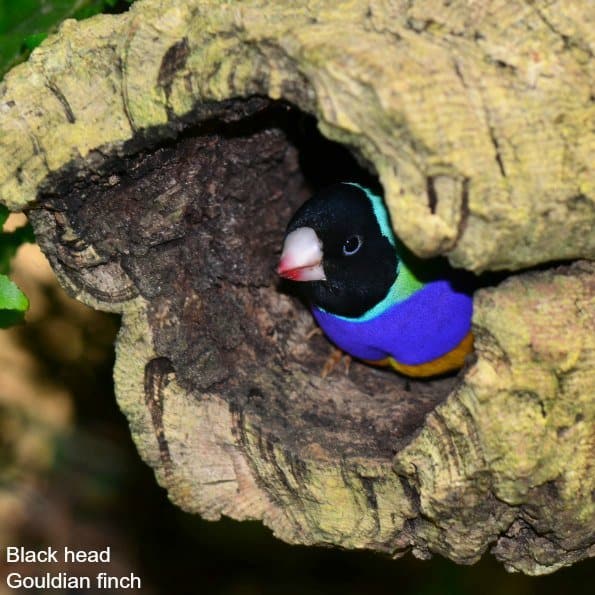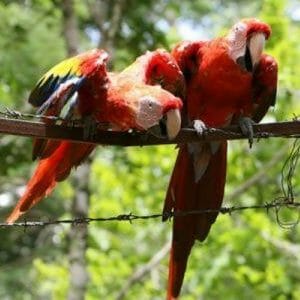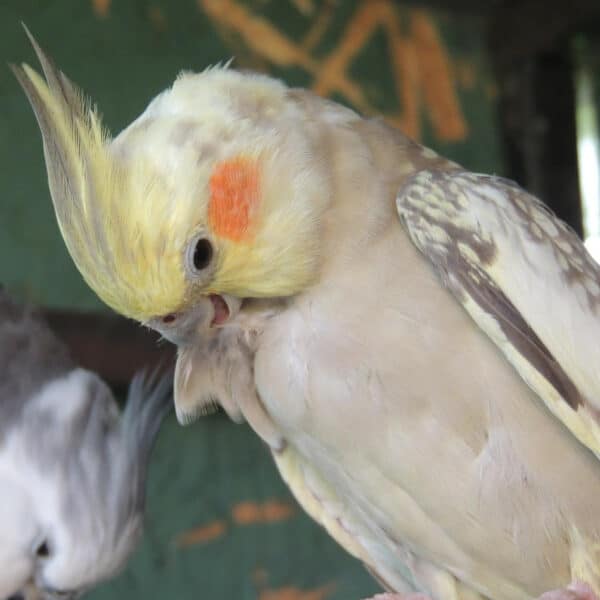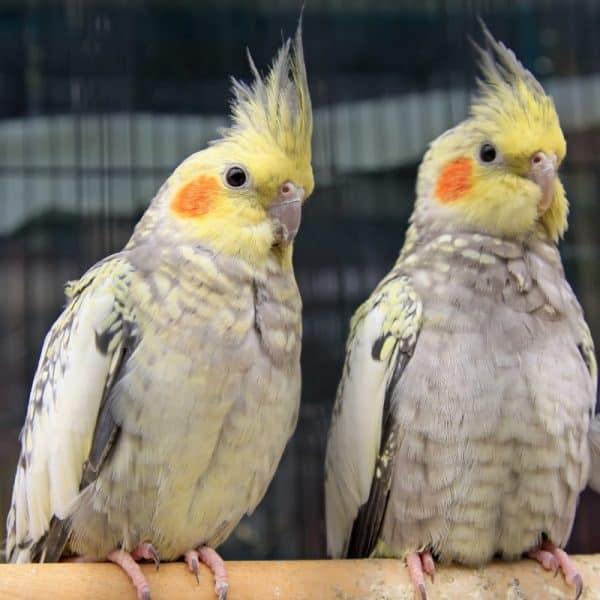Last Updated on by Mitch Rezman
Put a cage full of finches in a room if you want to breathe life into it. In reality, the term “Finch” kinda-sorta describes hundreds of “passerines.” You can tell a passerine because they have three toes facing forward and one facing back which helps in perching on a lot of different surfaces and tiny perches.
If we had all the time in the world, passerines form a huge and diverse terrestrial group of vertebrates having over 5000 identified species. Interestingly enough most passerines lay colored eggs – it’s a camouflage thing.
Finches are found throughout the Northern Hemisphere, South America, and the Hawaiian islands. They can be found in mountains and deserts. The Hawaiian honeycreepers will actually eat nectar in the wild.
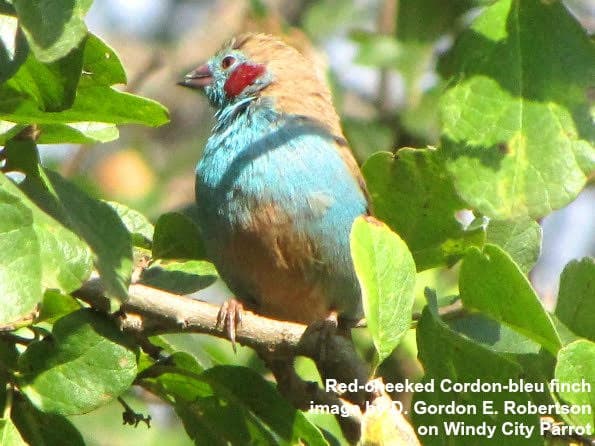
This is not going to be a discussion about finch care and breeding because the subject is so very broad and complex. Although we do carry a broad selection of finch supplies we don’t consider ourselves experts in all the many species of finches mentioned below.
I like to think of finches as “benign birds” as in other than basic care, food water, and cleanliness you don’t have the challenge of keeping the equivalent of an autistic two-year-old in a feather suit entertained for half a century. It’s not to say that they’re dumb little birds. In fact, house finches like those in Mexico have determined that using nicotine saturated cigarette butts to line their nests will protect their young from parasites.
As we see in this video finches can be trained.
Finches range in size from a little under 4 inches and 8-1/2 grams (0.3 ounces) – Andean Siskin – from Columbia to the Collared Grosbeak which is nearly 9 inches long and 80 g (3.0 ounces). Finches live for 4 – 7 years so it’s best to get them when they are young so you can enjoy them as long as possible.
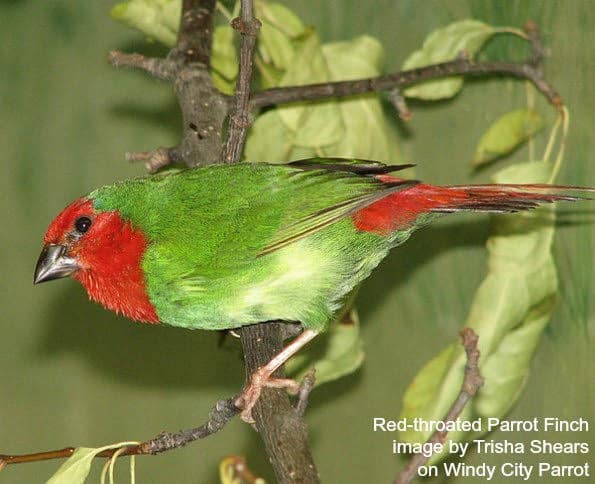
Larger species can become aggressive towards smaller ones, because of that we recommend a larger cage. We also don’t recommend the combining of finches with any other species that tend to be aggressive. it’s important to watch for signs of aggression or fighting.
The beautiful thing about finches is they are easy to care for and quiet so you can have them in an apartment. They’re fine with children and other pets. They socialize on their own. Because finches prefer to be left alone and are actually stressed when they become handled, they’re ideal for people who want birds who don’t have a lot of time to spend with them.
Determined finches can even go on to become rock stars
They are primarily seed-eaters.
In the wild, they also eat sprouts and insects which make up for what seeds don’t offer nutritionally.
Unless given a balanced diet by their owners’ finches left to their own devices would eat nothing but seed. Fresh foods should always be introduced as well
Finches like lots of room so larger aviary-style cages are most appropriate. It’s important to put sprigs of branches or other materials in a cage to allow finches to retreat for some privacy now and then. They don’t care for fancy bird toys as parrots do. They may enjoy small bell toys and a few tiny preening toys.
The best kind of perches are hardwood and natural branch perches as dowel perches can cause foot problems by not challenging the bird’s feet.
How many species & mutations of finches are there?
Here’s a little more than four dozen that we were able to come up with
| Gray Chestnut Flanked White Fawns Lightback Black Cheek Black Breasted Florida Fancy Orange Breasted Penguin Pied Eumo Agate Recessive Silver Black Face Fawn/Gray Cheek Dominant Silver Crested White Pearl-Headed Mannikin |
Zebra Finches Society Finches Society Finch (Bengalese) White Rumped Mannikin Gray Crown Mannikin Java Chestnut Breasted Mannikin Spice Finch White Headed Munia Black Headed Munia Moluccan Mannikin Grand Mannikin Tricolor Munia Pallid Nun White-Spotted Mannikin Black Throated Munia Five-colored Munia Black & White Mannikin |
Silverbill Rufous-Backed Mannikin Madagascar Mannikin Magpie Mannikin Australian Finches Owl Star Finch Gouldian Finch Masked Grassfinch Shaftail Finch (Longtail) Painted Firetail Plum Headed Diamond Firetail Other Finches Red Headed Finch Cutthroat Finch Chinese Grossbeak Yellow Beak Timor |
Written by Mitch Rezman
Approved by Catherine Tobsing
Author Profile
Latest entries
 The Traveling BirdJune 26, 2025Can You Name 5 Parrot Species That Are Living Wild in the USA?
The Traveling BirdJune 26, 2025Can You Name 5 Parrot Species That Are Living Wild in the USA? Bird BehaviorJune 26, 2025How is it Parrots Are Problem Solvers Social Animals and Even Use Tools?
Bird BehaviorJune 26, 2025How is it Parrots Are Problem Solvers Social Animals and Even Use Tools? Bird & Parrot AnatomyJune 25, 2025How a Tiny Chemical Modification Makes Parrots Nature’s Living Paintings
Bird & Parrot AnatomyJune 25, 2025How a Tiny Chemical Modification Makes Parrots Nature’s Living Paintings PigeonsJune 20, 2025How Do Parrots Thrive in Cities Outside Their Native Habitats?
PigeonsJune 20, 2025How Do Parrots Thrive in Cities Outside Their Native Habitats?
